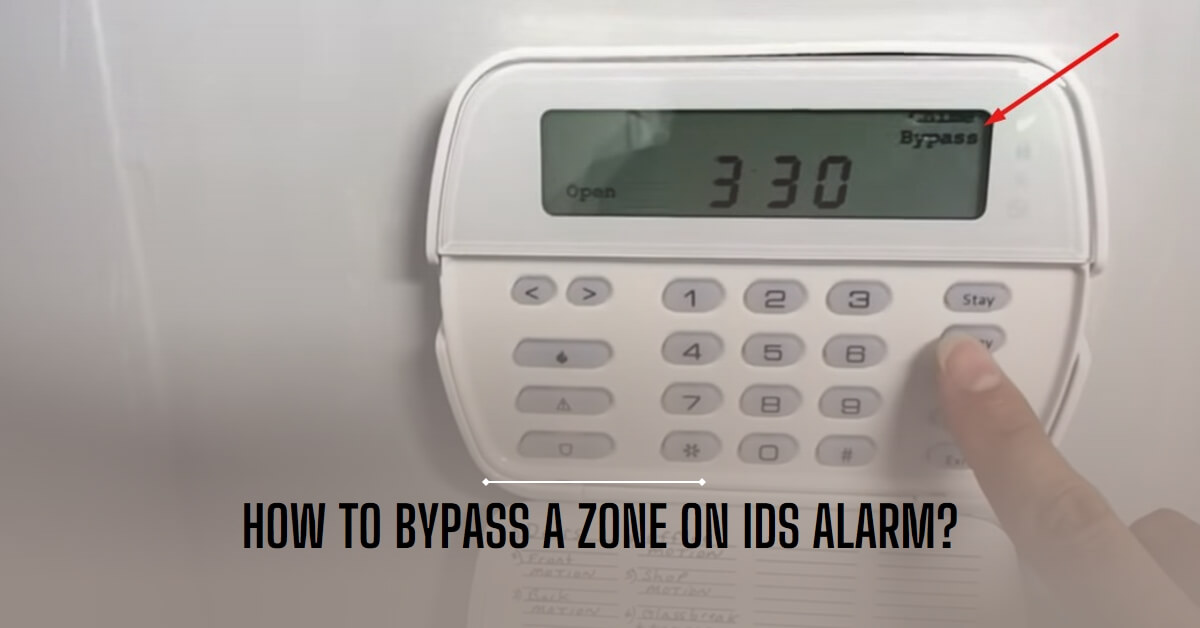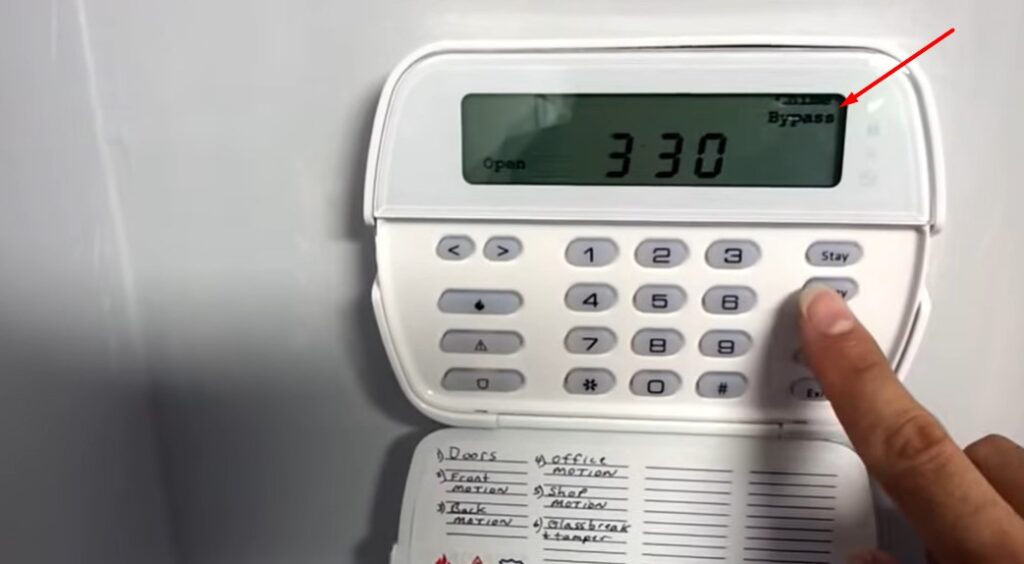Phone:
(701)814-6992
Physical address:
6296 Donnelly Plaza
Ratkeville, Bahamas.

In the realm of security systems, IDS alarms stand as stalwart guardians, vigilant against intruders and threats. However, there are instances where a need arises to bypass a zone on an IDS alarm system.
Whether for testing purposes, maintenance, or specific operational needs, understanding the process of bypassing a zone can be invaluable. Let’s delve into the intricacies of this procedure.

First things first, let’s understand what an IDS alarm is. IDS stands for Intrusion Detection System. Think of it like a super smart guard that watches over your house or your computer to make sure no sneaky intruders get in without permission.
Sometimes, there are areas that you want to keep an extra close eye on, but maybe you don’t want the alarm to go off every time you go near them. That’s where bypassing a zone comes in handy! It’s like telling the guard, “Hey, I’m going to be in this room for a while, so don’t worry if you see me.”
Now, before we learn how to bypass a zone, we need to know how to spot one on the alarm. Zones are like different rooms or areas that the alarm watches over. They might be labeled with numbers or names to help you know which is which.
Step 1: Disarming the System
First things first, you need to disarm the alarm system. This means telling it that you’re a friend, not a foe!
Step 2: Entering Bypass Mode
Next, you’ll need to put the alarm into bypass mode. It’s like giving it permission to ignore certain zones temporarily.
You can begin by getting access to the control panel of the IDS alarm system. This usually requires a designated access code or key.
Step 3: Enter Programming Mode
Navigate through the control panel menu to enter programming mode. This mode allows you to make configuration changes to the system.
Step 4: Selecting the Zone to Bypass
Once you’re in bypass mode, you can choose which zone you want to bypass. Within the programming menu, locate the option for zone bypass or zone configuration. Just pick the one you need from the list.
Step 5: Confirming Bypass
After selecting the zone, make sure to confirm the bypass. You want to double-check to ensure the alarm gets the message loud and clear!
Step 6: Exit Programming Mode
After confirming the changes, exit the programming mode to return the system to its normal operating state.
If you’re having trouble bypassing a zone, it’s best to reach out to someone who knows about alarms, like a parent or a technician. They can help you figure out what’s going on and how to fix it.
Typically, ADT alarm systems have a keypad where you can enter a code to disarm the system. However, bypassing a specific zone might require a different approach, depending on the model of the system.
One method could involve accessing the system’s menu settings through the keypad and temporarily disabling the zone in question.
Another option might involve contacting ADT customer support for guidance on how to bypass the zone.
Keep in mind that tampering with security systems may have legal implications, so it’s important to proceed with caution and ensure that you have the necessary authorization to make changes to the system.
To bypass a specific zone on an IDS Alarm X64, you typically need to access the system’s control panel or keypad.
From there, you can navigate through the menu options to find the zone bypass feature.
Once located, you can select the zone you wish to bypass and follow the prompts to confirm the bypass.
It’s important to clarify that bypassing a zone on a DSC alarm system is typically a temporary action rather than a permanent one. This is because bypassing a zone means temporarily disabling the sensors in that specific area, which can leave your property vulnerable to intrusions if not reactivated.
That said, if you need to bypass a zone temporarily on a DSC alarm system, you can usually do so by following the steps mentioned above.
If you’re looking for a more permanent solution, such as permanently disabling a zone, it’s typically not recommended for security reasons. Altering the configuration of your alarm system in such a way could compromise its effectiveness in protecting your property.
If you have specific requirements or concerns regarding zones in your DSC alarm system, it’s advisable to consult with a professional alarm technician or the manufacturer for guidance on the best course of action.
The master code is a unique access code assigned to the primary user or administrator of the alarm system. It grants full access to the system, allowing users to arm, disarm, and perform other administrative functions.
The master code is typically set during the initial installation of the IDS alarm system. It’s essential to keep the master code secure and confidential, as it provides complete control over the system’s settings and configurations.

The steps for bypassing a zone on a Honeywell panel are similar to the above mentioned steps for an IDS alarm. However, to make it more specific, we describe it here again.
To bypass a zone on a Honeywell panel, you would typically follow these steps:
Step 1: Access Installer Mode
Enter the installer code on the Honeywell panel’s keypad. This code allows you to access the system’s programming settings. If you don’t have the installer code, you may need to contact the installer or the alarm company for assistance.
Step 2: Navigate to Zone Bypass
Once in installer mode, navigate through the menu options on the keypad to find the zone bypass feature. This feature is usually located within the system programming or zone configuration settings.
Step 3: Select Zone
After accessing the zone bypass feature, you’ll need to select the specific zone or zones that you want to bypass. Use the keypad to enter the zone number or scroll through the available options to locate the desired zone.
Step 4: Confirm Bypass
Once you’ve selected the zone or zones to bypass, confirm the action according to the prompts on the keypad. This may involve pressing a dedicated bypass button or entering a command to confirm the bypass.
Step 5: Exit Installer Mode
After bypassing the desired zones, exit the installer mode by following the instructions on the keypad. This typically involves exiting out of the programming menu and returning the keypad to its normal operating mode.
Step 6: Test System
After bypassing the zones, it’s essential to test the system to ensure that it’s functioning correctly. Trigger each zone to verify that the bypassed zones do not trigger an alarm while the other zones remain active.
Keep in mind that bypassing zones on a Honeywell panel is typically a temporary measure and should be used with caution. It’s essential to re-enable bypassed zones when they are no longer needed to maintain the security of the premises.
To bypass a zone on your DSC alarm panel, follow these steps:
While bypassing zones can be a useful feature, it’s essential to exercise caution and adhere to certain precautions:
If you’re not comfortable bypassing zones or if it’s not an option with your alarm system, there are other ways to work around it. You can adjust the sensitivity of the alarm or use temporary measures like covering a sensor.
Q1: Is bypassing zones safe?
A1: Bypassing zones can be safe if done correctly and for the right reasons. Just make sure to use it wisely!
Q2: Can I bypass all zones at once?
A2: It depends on your alarm system. Some allow it, but it’s generally not recommended for safety reasons.
Q3: Will bypassing a zone affect my insurance?
A3: It’s possible. Some insurance companies might have rules about how you use your alarm system, so it’s best to check with them.
Q4: Can I bypass a zone remotely?
A4: Again, it depends on your alarm system. Some advanced systems might allow remote bypassing, but it’s not common for basic setups.
Q5: How long can I bypass a zone for?
A5: It varies, but typically you can bypass a zone for a set period, like a few hours, or until you manually disable the bypass.
In conclusion, bypassing a zone on an IDS alarm can be a useful tool when used correctly and responsibly. Just remember to only bypass zones when necessary, double-check your settings, and stay safe!